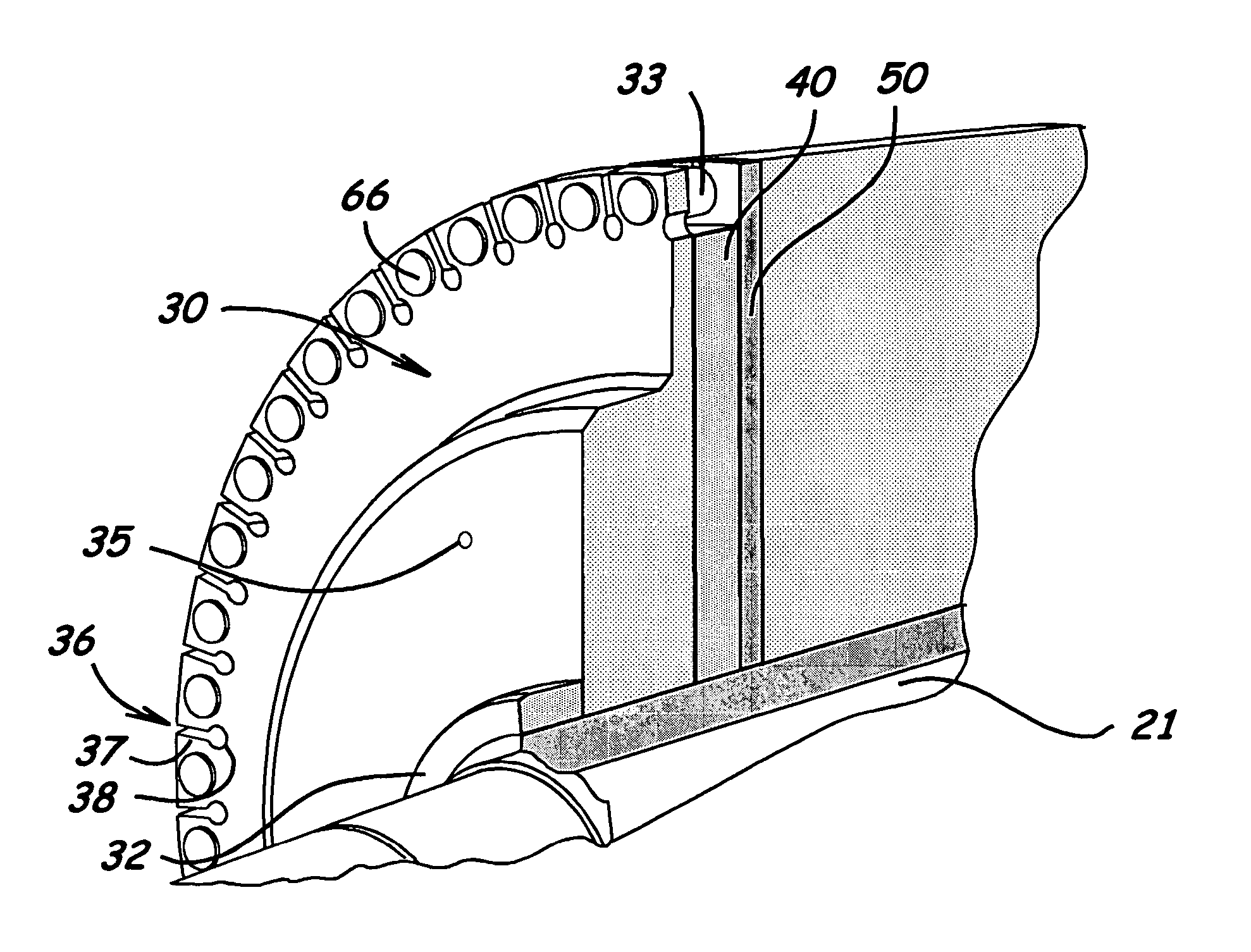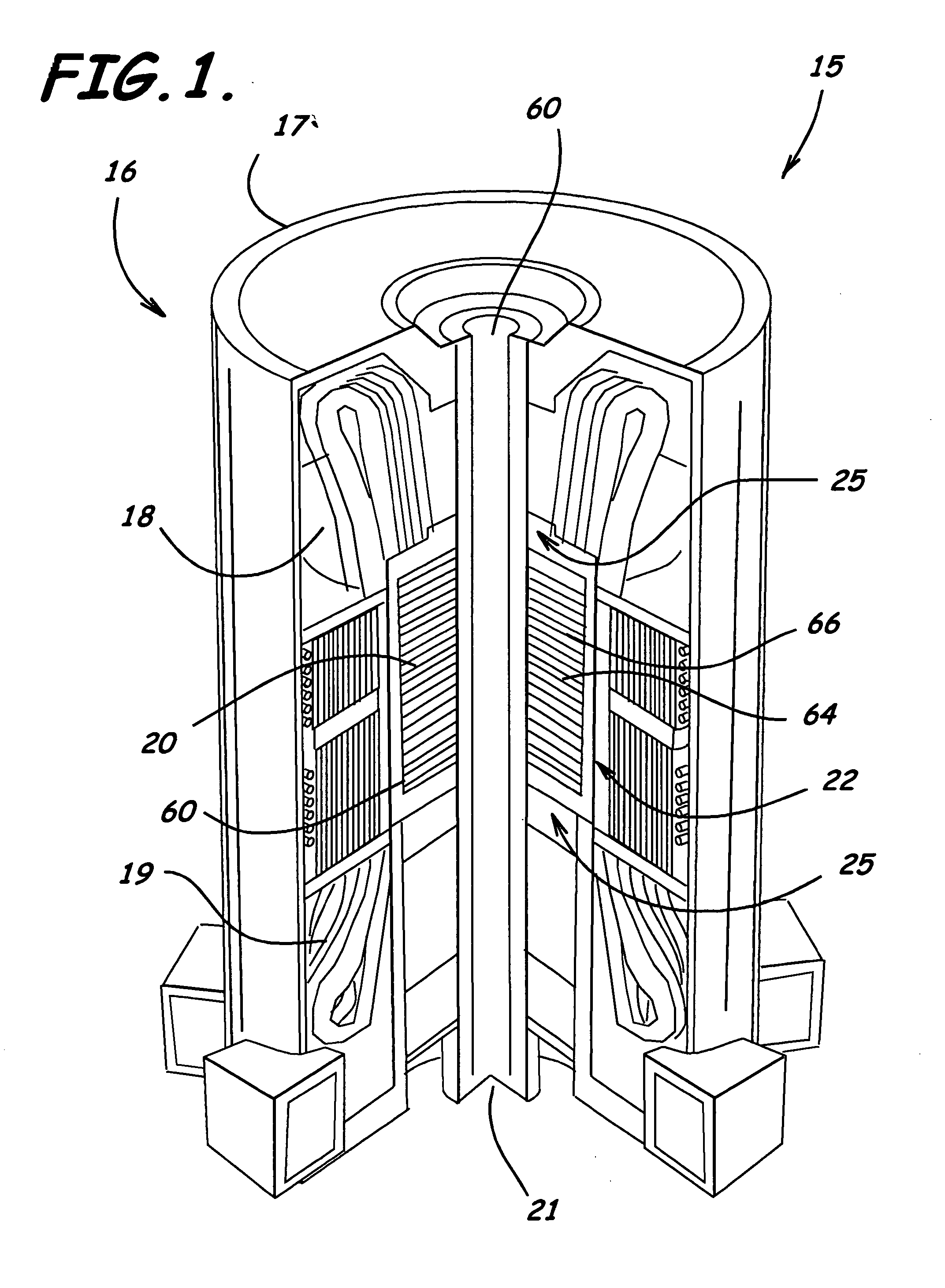High strength induction machine, rotor, rotor cage end ring and bar joint, rotor end ring, and related methods
a high-strength induction machine technology, applied in the field of induction machines, can solve the problems of increasing the complexity of end ring design, requiring rigorous design of each major, and non-trivial centrifugal and thermal stresses, so as to achieve high strength, reduce stress, and advance the effect of operating speed and power
- Summary
- Abstract
- Description
- Claims
- Application Information
AI Technical Summary
Benefits of technology
Problems solved by technology
Method used
Image
Examples
Embodiment Construction
[0049] The present invention now will be described more fully hereinafter with reference to the accompanying drawings in which embodiments of the invention are shown. This invention, however, may be embodied in many different forms and should not be construed as limited to the embodiments set forth herein; rather, these embodiments are provided so that this disclosure will be thorough and complete, and will fully convey the scope of the invention to those skilled in the art. Like numbers refer to like elements throughout.
[0050]FIGS. 1-14 illustrate embodiments of an apparatus 15 such as a high strength induction machine, a rotor 20 for an induction machine, an end ring and bar joint 25 and related methods according to the present invention. As will be understood by those skilled in art, an embodiment of an apparatus 15, for example such as shown in FIGS. 1-2J, includes a stator 16 having a stator frame 17, a stator core 18 positioned in or otherwise associated with the stator frame...
PUM
 Login to View More
Login to View More Abstract
Description
Claims
Application Information
 Login to View More
Login to View More - R&D
- Intellectual Property
- Life Sciences
- Materials
- Tech Scout
- Unparalleled Data Quality
- Higher Quality Content
- 60% Fewer Hallucinations
Browse by: Latest US Patents, China's latest patents, Technical Efficacy Thesaurus, Application Domain, Technology Topic, Popular Technical Reports.
© 2025 PatSnap. All rights reserved.Legal|Privacy policy|Modern Slavery Act Transparency Statement|Sitemap|About US| Contact US: help@patsnap.com



